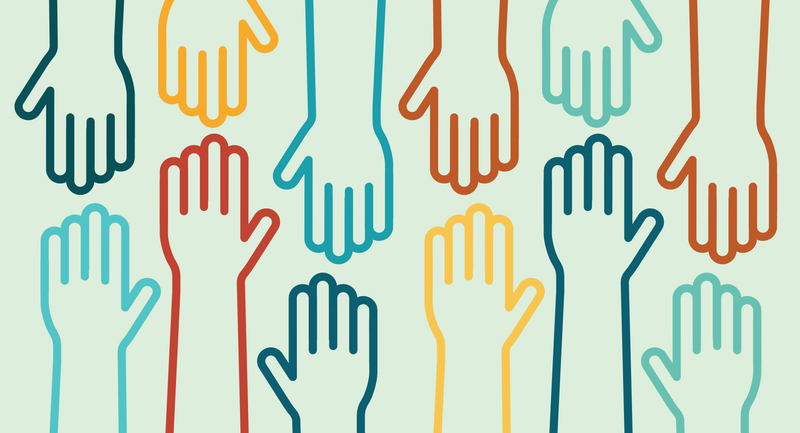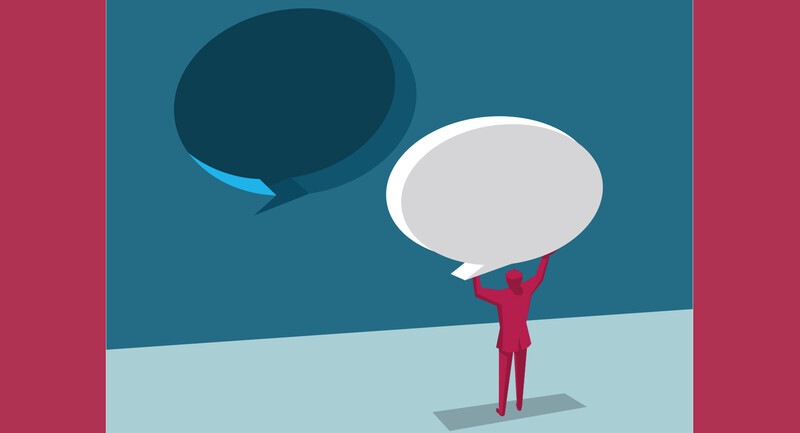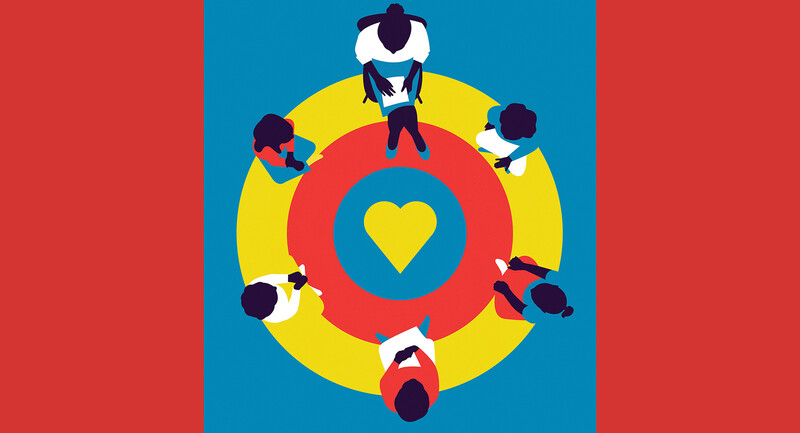A wealthy man traveling with his entourage came upon a dervish by the roadside. As the wealthy man passed, he kicked the poor dervish. The dervish immediately rose, shaking his cane in the air, and shouted after the wealthy man, "May your every desire be fulfilled!"
A bystander, perplexed by this incident, inquired after the dervish's reasoning. The dervish replied, "Oh man of benevolent countenance, do you not know that if that man's desires were fulfilled he would have no cause to go around kicking poor dervishes such as myself?" (Shah 1972, 1991).
The story of the dervish raises an important issue. The bystander, no doubt, expected the dervish to shout back something negative, a kind of verbal revenge. Most behavioral interventions involve some form of punishment or negative consequence, a manipulation designed to correct the offender's actions. Yet, we know that punishment does not work with many students, particularly those with low self-esteem (Jensen 1995, Glasser 1984). The repeat offenders in America's detention rooms are a daily confirmation of the failure of punishment. Student offenders, like the wealthy man, hurt others because they cannot adequately meet their psychological needs, and their teachers are burning out from trying to coerce them into obedience.
For those educators tired of writing the names of misbehaving students on the board, disenchanted with group punishments and rewards, and frustrated by escalating levels of detention time, a different way is bringing some success to both elementary and secondary classrooms. Educational Responsibility, in contrast to stimulus-response models that control students from the outside, is designed to strengthen student empowerment and responsibility.
Like many educators, I am suspicious of using any one approach to something as challenging and complex as classroom dynamics. Hence, the strategies that make up Educational Responsibility are grounded in, but not limited to, the work of William Glasser (1984, 1990); the Johnson brothers (1991); Allen Mendler and Richard Curwin (1988); and, for primary and intermediate educators, Ruth Sidney Charney (1991). As a staff developer for a county-level organization, I've conducted workshops on Educational Responsibility in five school districts, and feedback from teachers and administrators has been encouraging. From the ashes of our old Skinnerian model of instruction, a new kind of classroom community has arisen.
Change: The Big Picture
Teachers learn about Educational Responsibility by attending three full-day workshops, with time allotted afterwards for using the new skills in their classrooms.
We begin with how to set up a need-fulfilling classroom. The strategies we discuss include building team and community involvement, giving students choices, increasing the value for effort, setting students up for success, making success concrete, and creating multiple opportunities for improvement. We use an excerpt from ASCD's video series on Cooperative Learning ("Teaching Social Skills"), along with live role play.
Participants design a social skills lesson to use with an already planned academic lesson they will be teaching between sessions.
Then we move on to interventions—for example, learning how to use Glasser's Reality Therapy (1965); setting up conflict negotiation in the classroom; and designing creative restitutions and logical consequences.
Together, we look at requests from the teachers: assisting students with attention deficit disorder, teaching in an inclusionary classroom, and handling difficult parents.
After the three workshops, I observe or model selected strategies being applied in the classroom: student-teacher social contracts; social skills lessons infused into the academic curriculum; class meetings to address problems; centers to stimulate independent practice; regular self-assessment (both academic and social); cooperative learning; lessons designed for student-constructed processing; and conflict resolution and healthy choice making.
Classroom Vignettes
Come with me to a 2nd grade in Golden Hill Elementary, a small, rural school in the heart of upstate New York's onion fields—"black dirt country," as the locals call it. I am greeted by a few students, a kind of welcoming committee. Everyday moments are opportunities to practice positive social skills. Soon the class is telling me about their work on Eleanor Roosevelt and Georgia O'Keeffe. Looking around, I see evidence of a writing workshop, a community hunger project, electricity experiments, and signing for the deaf.
Later, during a class meeting, a boy pokes his neighbor with his pencil, and a conflict begins. The teacher pauses. She asks the boys if they want to work it out alone or with the group. The boys choose the group. Their teacher guides them through the conflict resolution steps, modeling how to responsibly express feelings with I-statements (for example, "I feel angry when you poke me with your pencil"). Next, the class generates solutions, including how to express anger in a different way the next time. After reaching a successful solution, they celebrate.
During another visit, this time to the Florida, New York, school (Union Free School District), I observe that the class becomes disruptive during a teacher-directed lesson. "This lesson isn't working," the teacher says.
"What do you think could help this lesson go better?" After some silence, a few hands go up and students offer suggestions ("I could sit where I won't talk with Mary," "We could take an exercise break"), some of which are used, and the lesson continues successfully.
Educational Responsibility gives teachers a broad repertoire of strategies to empower their students. Let's look at a few of them up close.
Class Meetings
A significant part of moral development comes through dialogue, reflecting on experience, and looking at how our behavior affects others (Kohlberg 1989). One powerful forum for supporting moral development is the class meeting.
The first meeting might begin with this inquiry: "What kind of a classroom community do we want to have?" Once the meetings are established, they become a weekly event. The class honors the basic rules of the Franklin Institute for Mediation to try to solve problems, not to use any put-downs, and to listen without interrupting. The students sit in a circle, gather data, and generate solutions. Often an agenda is posted on a bulletin board, inviting students to suggest topics.
Everyday conflicts—who gets the kickball during recess, how to deal with cliques or stealing—provide the content for learning shared decision making and problem solving. During the meeting, students learn how to make I-statements, how to support what they say, and how to criticize an idea without attacking the person who gave it.
With intermediate, middle, and high school students, teachers might use the STePS model (Structured Team Problem Solving) during a class meeting (Metivier and Sheive 1990). Students "brainstream" ideas, cluster and clarify them, and create concrete graphic visuals to represent their thinking. (While brainstorming is the random expression of ideas, with brainstreaming, ideas flow from one person to the next, with the option to pass.) Lead roles rotate, and students learn to rehearse and condense their ideas. Students record their contributions on large easel paper, followed by their initials.
Students as Decision Makers
"Here is a clean map of Canada," says a 5th grade teacher at Pine Tree Elementary School in Harriman, New York (Monroe-Woodbury School District). As she holds up the 16-by-24-inch unlabeled outline, she tells her students, I'd like you to develop ideas for making the labeling as aesthetically beautiful and technically accurate as possible. We need to do this before we make a single mark on the maps. Appoint a recorder to write down your ideas.
The students come up with ideas about spacing with a ruler; using coordinate colors to differentiate cities, provinces, and rivers; designing "bubble" letters for labeling; appointing someone to check spelling in advance; and so on. As her students construct ideas, the teacher pauses to ask questions. Instead of one student responding at a time, every student responds in his or her learning log, and then students share their responses. These students are learning much more than geography.
Some teachers use props in the classroom to involve students in discussions; for example, a koosh—that rubbery ball that looks like something you'd see while snorkeling (Kline 1988). The students, not the teacher, choose who speaks next by tossing the koosh to someone whose hand is raised. Having this tangible object makes clear whose turn it is to speak. During site visits to Educational Responsibility classrooms, I see the koosh used to find out what students know at the beginning of a new topic ("What can you tell me about immigration?") or to review for a test ("If you were to coach your best friend to ace this test on electricity, what would you stress?").
Another tool I've seen teachers use is a red cup placed upside down on a green cup and taped together. When a student needs help, he or she places the red side up and either the teacher or a student who "gets it" comes to coach. This provides an enrichment experience for some students and necessary one-on-one assistance for others. The key is that the student has the power to choose when to work alone and when to receive help.
Students as Teachers
Two 3rd grade teachers—one at Truman Moon Elementary in Middletown, New York, and the other at Goshen Intermediate in Goshen, New York—developed academic strategies for teaching math from the responsibility model. One teacher gives her students a red pen and a math problem done incorrectly.
They have to correct the problem and write the author, explaining the mistakes and how to correctly solve the problem. This teacher also helps her students remember their math homework with a buddy system. Her 3rd graders call one another in the morning, before school: "Don't forget to bring your homework!"
At Goshen Intermediate, students take turns being the teacher, while the teacher takes over that student's learning log. While the student does a demonstration at the chalkboard, the teacher models how to be a student, asking questions about what the "teacher" presents and showing how to take notes. She also adds a positive, uplifting comment to her math notes in the student's learning log. While sitting at the student's desk, the teacher raises her hand, "Excuse me, but I don't understand why the fraction is called equivalent if the numbers get bigger." The student who is role-playing the teacher answers and illustrates on the board.
Reflecting on Mistakes
You can't have rules without consequences. Consider again the story of the dervish. Responding to an offense is not about getting revenge but about justice. How do we move from manipulating students with rewards and punishments to helping them make decisions that satisfy their needs without violating those of others?
Instead of wasting time in the suspension room, the offending student might assess his or her behavior, list alternate choices, practice a more successful behavior during free time, design a restitution, or participate in a conflict resolution process. Some classes create a nonpunitive reflection space, where students go to regain self-control. When a mistake occurs, the idea is to respond with something done by the student as opposed to something done to the student.
A Leap of Faith
For some teachers, buying into the responsibility model involves a major leap. We don't see rituals supporting change in education, and many teachers feel drained by new expectations. If teachers were raised with love and punishment and feel the punishment served good character development, they find it difficult to accept that punishment does not work on individuals with low self-esteem or failure identities. Hence, they cling to the behavior modification path, resisting control theory (Glasser 1984) or other approaches that focus on need fulfillment. Consider the following story.
Approximately 30 K–12 educators are gathered for an Educational Responsibility workshop. The focus is the relation between need fulfillment and prosocial behavior. I am alluding to Jean Valjean's life-changing experience with the kind bishop (Les Misérables). The gendarmes have brought Valjean—an ex-con, rejected and embittered by society—to face the benevolent clergyman, the only person to treat him with dignity and the person from whom he stole. Handcuffed and shame-faced, Valjean stands before the bishop. The surprise is in how the bishop greets the accused: "I'm delighted to see you. Had you forgotten that I gave you the candlesticks as well?" And with that, Valjean turns his life around and begins to serve humanity.
A kindergarten teacher at the workshop tells her own story about a student stealing from his classmates, almost daily. One day, when the boy was absent, she addressed the problem in a class meeting. Her kindergartners reasoned that maybe the classmate steals because he feels he doesn't have enough "stuff," so the next day they arrived with pencils, erasers, and pieces of gum, many giftwrapped, and showered him with presents. "He never stole again," says the teacher, eyes filled with tears, obviously moved.
Immediately other hands shoot up: "Aren't you teaching your students to reward stealing?"
Like the bystander in the story about the dervish or the gendarmes in Les Miserables, these teachers are perplexed. Somehow, those 5-year-olds, like the dervish and the bishop, understood that unfulfilled needs make for destructive behavior.
Change takes time, communication, practice, support, affirmation of the new, and letting go of the old. In America, where everything needs to happen yesterday, we don't often take the time for rituals to support change (Fullan 1982). It's no wonder that some educators have difficulty letting go of the obedience model and embracing the responsibility model.
Empowerment Through Responsibility
Our public school students learn to do three things really well, says Diane Gossen in her work on restitution (1992). They learn how to say they're sorry, say what the teacher wants, and do time (detention). Many of our difficult students withdraw or act out—minimizing effort, getting by, or blaming the educational authorities for their failures, failures at what seems to them merely a game. How often are these students invested in their school work deeply enough to produce quality? And where do they look to get their psychological needs met? We rarely see a Dead Poets Society.
These days we're more likely to see street gangs as the alternative, need-fulfilling community.
If we want to nurture students who will grow into lifelong learners, into self-directed seekers, into the kind of adults who are morally responsible even when someone is not looking, then we need to give them opportunities to practice making choices and reflecting on the outcomes. Responsibility means owning one's failures and successes—small, medium, and large.
And we, the adults, are often caught up in the same self-defeating mental set as our students—for example, when we attribute causes for failure to poor parenting, ineffective textbooks, lack of funding, or any number of other causes—real or imagined—outside of our control. Teaching our students that we control ourselves, that we choose our fulfillment or frustration, makes the critical difference—the difference I see in these responsibility-based Orange County classrooms.







